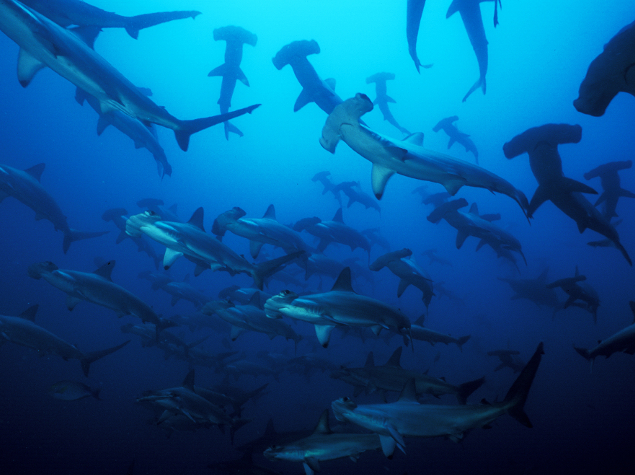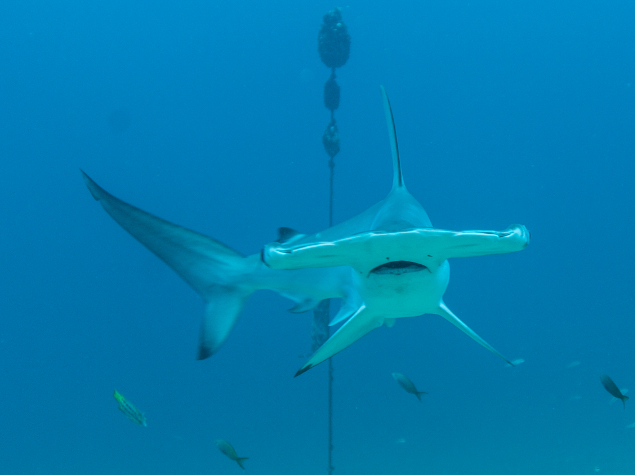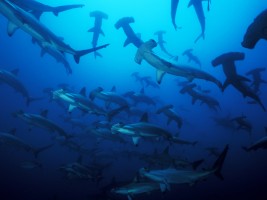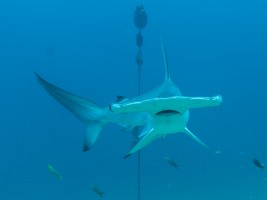Spatial ecology of Hammerhead sharks around Malpelo Island, connectivity and search for nursery areas in the Pacific coast
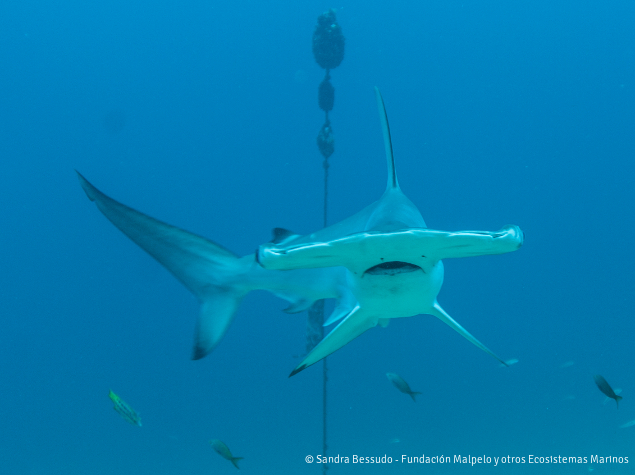
Sphyrna Lewini, most commonly known as the hammerhead shark is classified in the CITES appendix II and has been classified as an endangered species in the IUCN red list since 2007.
Every species among the Sphyrna genera have certain common characteristics such as late sexual maturity, low fecundity and low natural mortality, that make them have a low population increase and therefore highly vulnerable to overexploitation. In addition, Sphyrna species are migratory species making them vulnerable due to the illegal fishing for the international trade of their fins.
Different migratory species frequent the Malpelo Island. Hammerhead sharks forms large schools around the island, making it an ideal place for the study of the species. On the other hand, the Pacific region is one of the areas with the highest poverty levels in Colombia, there are a lot of extraction activities: 85-90% of the total fishing industry of the country is provided by this region and there is almost no regulation. In this context, the protection of endangered species like Shpyrna Lewini is difficult to address and is extremely necessary to recognize their vulnerability to promote efficient conservancy actions that can provide protection and preservation of big and important predators such as this one.
The aim of this project, led by Fundacion Malpelo, is to create efficient conservation actions to protect this species and to expand the knowledge in its spatial ecology using MigraMar (a scientist network dedicated to the research and conservation of migratory marine species in the East Pacific region since 2006), as well as understanding the specie connectivity between Marine Protected Areas and coastal areas.
Final report summary (November 2019):
During the supported period, various activities have been implemented. First of all, 5 pregnant females were equipped with satellite tags in Malpelo island. This allowed the NGO to detect a migration route towards the Colombian coast, after which a congregation area was identified: the Tribugá Gulf. In this gulf, 30 juveniles were identified and equipped with acoustic transmitters and 6 receivers were also installed along the coast. All the data collected allowed Fundacion Malpelo to confirm this area as an important nursery ground for the species from June to September. Further studies should be done, in particular, to classify the species in Annex I of the CITES (more restrictive than the II, already granted) but also to fight against the setting-up of a deepwater port in the gulf which would affect its biodiversity.

